21 Perfect Outdoor Winter Plants for Pots
These winter plants for pots will thrive outdoors during cold weather months.
Winter is coming, but this doesn’t mean your home has to be dreary and void of life.
A cold climate is often seen as ‘down time’ in the garden or house plant world, but many winter plants for pots thrive outside and provide great options to upgrade your home this winter.
Using texture and color, you can warm up your patio, front porch, or deck with plants.

From evergreen foliage to vibrant flowers to vivid berries, the right outdoor winter plants for pots are a great way to create a lovely winter oasis that doesn’t require waiting until early spring.
Plenty of plants can survive cold winters in pots, even in freezing temperatures, snow, and ice.
In the list below, we have a wide selection of plants which you can plant outdoors in pots during winter.
And aside from the first plant on our list, all can be planted in containers as low as USDA planting zones 2 through 5.
21 Perfect Winter Plants for Pots
- Camellia
- Boxwood Hedge
- Sweet Violet
- Pansies
- Juniper
- Springwood Pink
- Wintergreen
- Inkberry Holly
- Japanese Yew
- Cyclamen
- Yucca plant
- Creeping Jenny
- Christmas Rose
- Blue Spruce
- Snowdrops
- Coral Bells
- Ornamental Cabbages
- Lavender
- Hens and Chicks
- Woodland Stonecrop
- Little Bluestem
Read on to get the details on these plants to help you choose what to plant in your outdoor containers during winter months.
And for spring, check out this article for information to help you choose the trees that will give you the best autumn colors.
1. Camellia
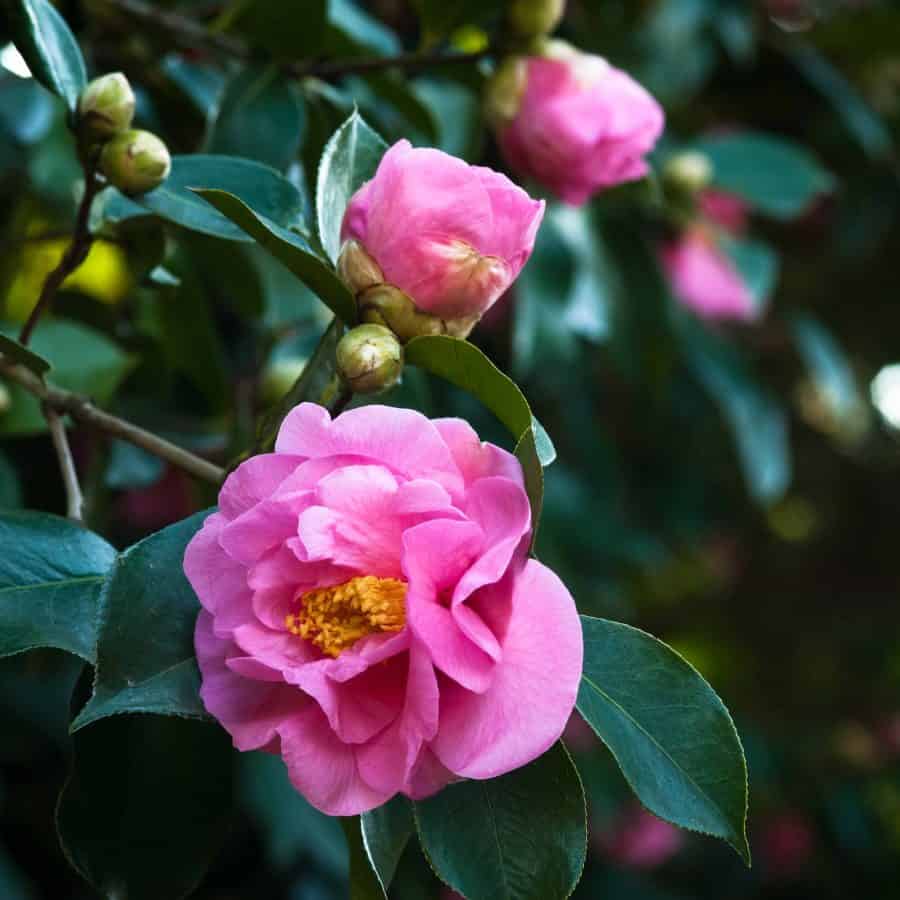
Camellias are popular in big garden spaces but make good container plants.
This flower has grace and beauty due to its delicate petals and soft, velvety texture.
Its blooms come in a variety of colors, from the palest pink to the deepest red,
Blooming in various forms and colors even in the colder months, these are a great choice to add something to your garden landscape.
Once they outgrow their containers, you can transplant camellias in the spring to yards and gardens.
Cold hardy to zone 6b
2. Boxwood Hedge
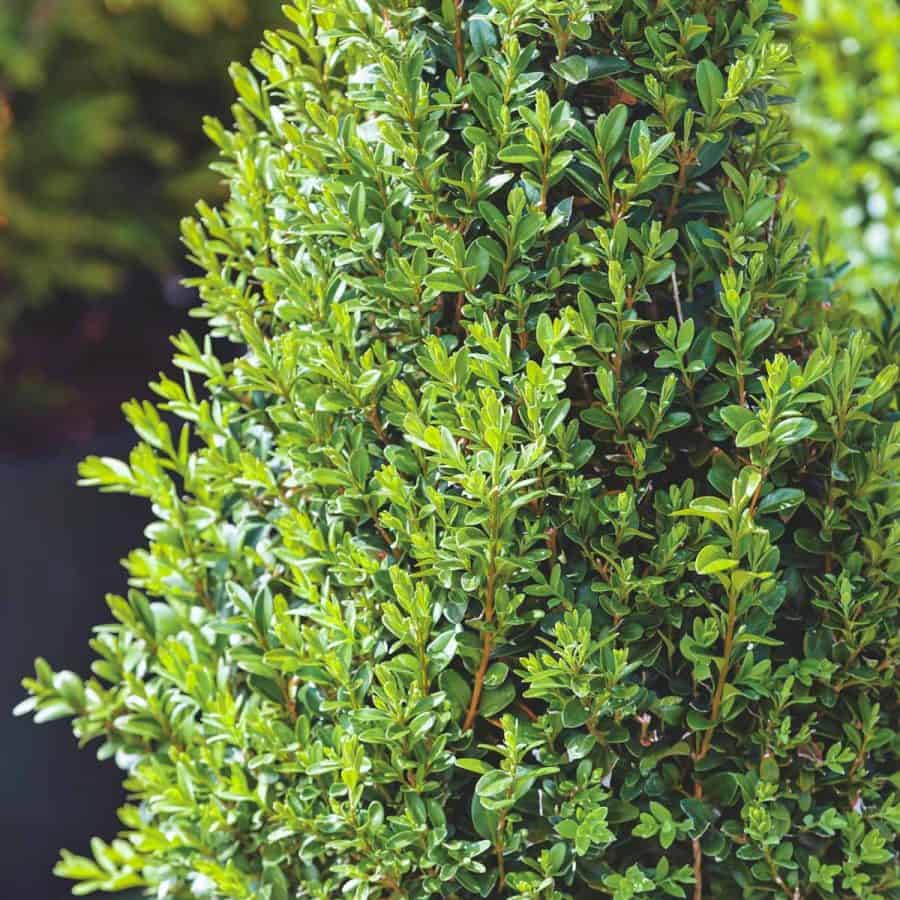
Boxwoods are classic winter evergreen shrubs, perfect for adding structure to hedges, edging plantings, or containers on porches or lining garden pathways.
They are tough plants that can withstand challenging climates and cold temperatures.
One of the most attractive features of boxwoods is their foliage. The leaves are small and glossy and come in various colors, including green, gold, and variegated.
Boxwood flowers are small and inconspicuous but produce small berries that birds love.
Rotate the pot periodically to balance the plant’s sun exposure to encourage even growth.
Cold hardy to zone 5
Here are tips for choosing hedges that stay evergreen.
3. Sweet Violet | Viola odorata
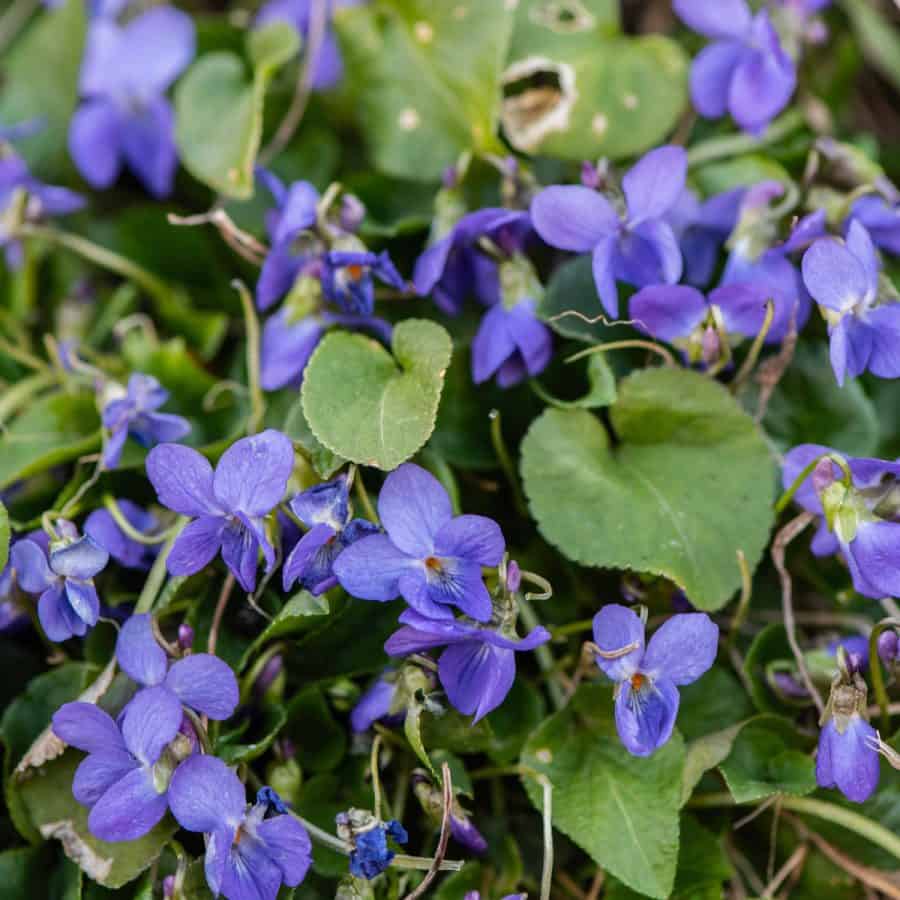
Viola odorata, also known as the sweet violet, wood violet, or common violet, is a hardy perennial that blooms in various beautiful colors, including purple, blue, and white.
Viola odorata is an excellent choice for adding a touch of color to your garden or porch, and it is also a great option for edible flowers.
The flowers have a sweet flavor that is perfect for adding to salads, desserts, or cocktails.
Violas don’t require excessive care and are pretty low maintenance.
Tips for growing violas in outdoor winter planters:
- Water regularly
- Place in partial shade
Be sure to regularly deadhead them (removing the dead leaves and flowers), too, as this will prolong the flowering period.
Cold hardy to zone 4
4. Pansies

Pansies are durable little plants and can survive freezing temperatures while thriving in the summer.
They are a cheerful and colorful addition to any winter garden.
Their bright blooms brighten up the landscape, and their hardy nature makes them an excellent choice for pots.
Pansies are a type of viola that come in many colors, including yellow, purple, blue, and white.
They have a delicate, ruffled appearance, and their petals are commonly tipped with a contrasting color.
They prefer full sun and are easy to grow and care for, but they can tolerate some shade.
Underwatering is one of the most common problems with pansies, so don’t be shy about giving them the water they need; make sure they have good drainage.
Pansies are a great choice for winter gardens because they are cold-hardy. They can withstand temperatures as low as -10 degrees Fahrenheit.
Pansies are a great option if you’re looking for a beautiful and easy-to-grow winter plants for pots.
Cold hardy to zone 3
5. Juniper

Juniper is a hardy, evergreen shrub with needle-shaped foliage. It is tolerant of drought and can withstand difficult climates.
Junipers can grow as shrubs or in containers as column-shaped accents. Their blue, waxy berries and green/blue-grey foliage are striking.
Rotate the pot periodically to balance the plant’s sun exposure and encourage even growth.
With their beautiful foliage and striking berries, junipers will turn heads all winter.
Cold hardy to zone 3
6. Springwood Pink | Erica carnea

Winter heath is a cold-tolerant, evergreen shrub with wispy, tubular-shaped flowers.
It is a member of the heather family and produces lovely pink and purple flowers in the winter months.
Winter heath is also a fantastic choice for planting in containers, as it can tolerate neglect and cold.
Winter heath will reward you with its beautiful flowers year after year.
Tips for growing winter heath in a pot in winter:
- Choose a sunny location with well-drained soil.
- Let the soil dry before the next watering.
- Fertilize once a year in the spring.
- Prune in late winter or early spring to remove dead or damaged branches.
Cold hardy to zone 5
7. Wintergreen | Gaultheria procumbens
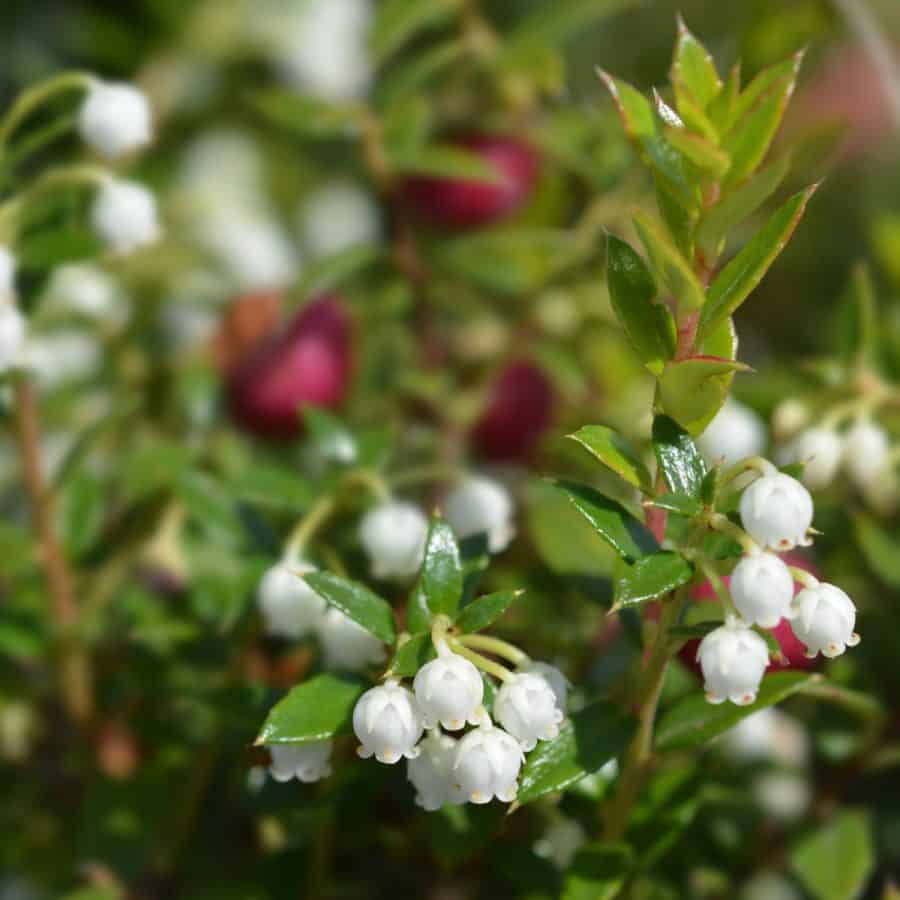
This is a plant you’ve likely seen before as it has noticeable red berries, perfect for a winter landscape.
Its sweet-scented evergreen shrub with delicate white flowers, shaped like tiny bells, bloom against the dark green leaves, creating a sharp contrast.
The berries are edible and have a sweet, tart flavor.
This hardy outdoor plant loves acidic, moist but well-drained soil that can grow in both full and partial shade.
Additionally, it is drought tolerant, making it low maintenance.
Wintergreen is one of the best picks when it comes to outdoor winter plants for pots.
Cold hardy to zone 3
8. Inkberry Holly | Ilex glabra

Inkberry holly is a wonderful choice for adding color and interest to your winter landscape.
It is perfect for outdoor winter pots because it is both hardy and evergreen. This evergreen shrub is a favorite of gardeners for its dark green leaves and bright red berries.
The dark green leaves contrast with snow, and the bright red berries add a touch of festive cheer. Inkberry holly is also great for attracting birds.
It is tolerant of various soil conditions, making it a low-maintenance plant.
Cold hardy to zone 5
9. Japanese Yew

A Japanese yew is great for a front porch year-round due to its tolerance to drought. It can also thrive in both full and partial sun.
It is most commonly used as groundcover or in winter containers.
However, it can also be grown as a tree and can reach more than 50 feet in height.
Cold hardy to zone 4
10. Cyclamen
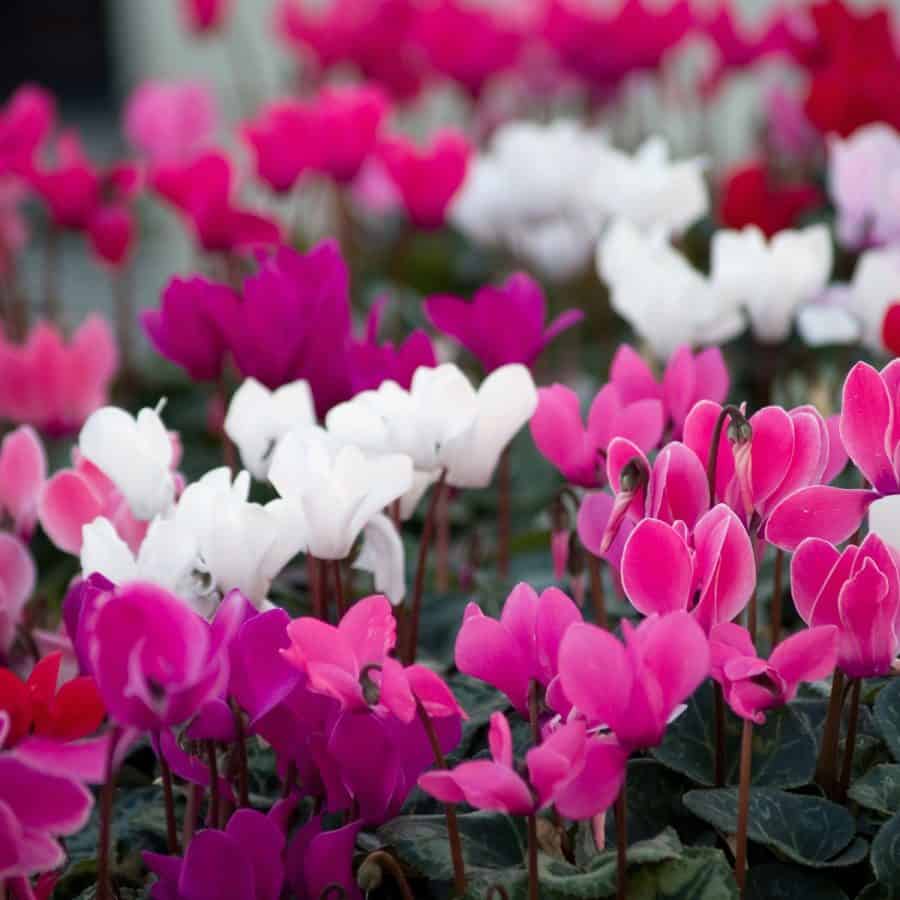
Hardy cyclamen grow well in winter pots; you can plant them in the garden after flowering. They look stunning at the base of trees and shrubs as a bedding plant.
They are one of the most beautiful flowers of the winter season. Their delicate petals and vibrant colors will add a touch of color and life to pots during the winter months.
Cyclamen will bloom in the winter or early spring. The flowers come in various colors, including white, pink, purple, and red.
Cyclamen also produce berries, which are edible but not very flavorful.
Here are some tips for growing cyclamen in winter pots:
- Choose a pot that is slightly larger than the root ball.
- Use a well-draining potting mix to protect from root rot.
- Fertilize monthly with a balanced fertilizer.
- Place the pot in a cool, shady spot.
- Protect the plant from frost.
With proper care, cyclamen will bloom for several weeks and provide beautiful flowers to enjoy all winter.
Cold hardy to zone 4b
11. Yucca Plant

The yucca plant is a striking architectural specimen that is sure to add a touch of elegance to any garden container.
With its long, sword-like leaves and towering height, the yucca plant is a statement piece that will draw the eye of all who see it.
But what truly sets the yucca plant apart is its beauty. The yucca plant’s leaves are a deep, rich green that is simply stunning.
When the yucca plant blooms in the spring, it produces a delicate, fragrant flower.
The yucca plant is also a very low-maintenance plant. It is drought-tolerant and can withstand long periods of neglect.
Tips for growing yucca plants in winter in pots:
- Choose a pot that is slightly larger than the root ball.
- Use a well-draining potting mix.
- Do not overwater.
- Place the pot in a sunny spot.
Cold hardy to zone 4
12. Creeping Jenny
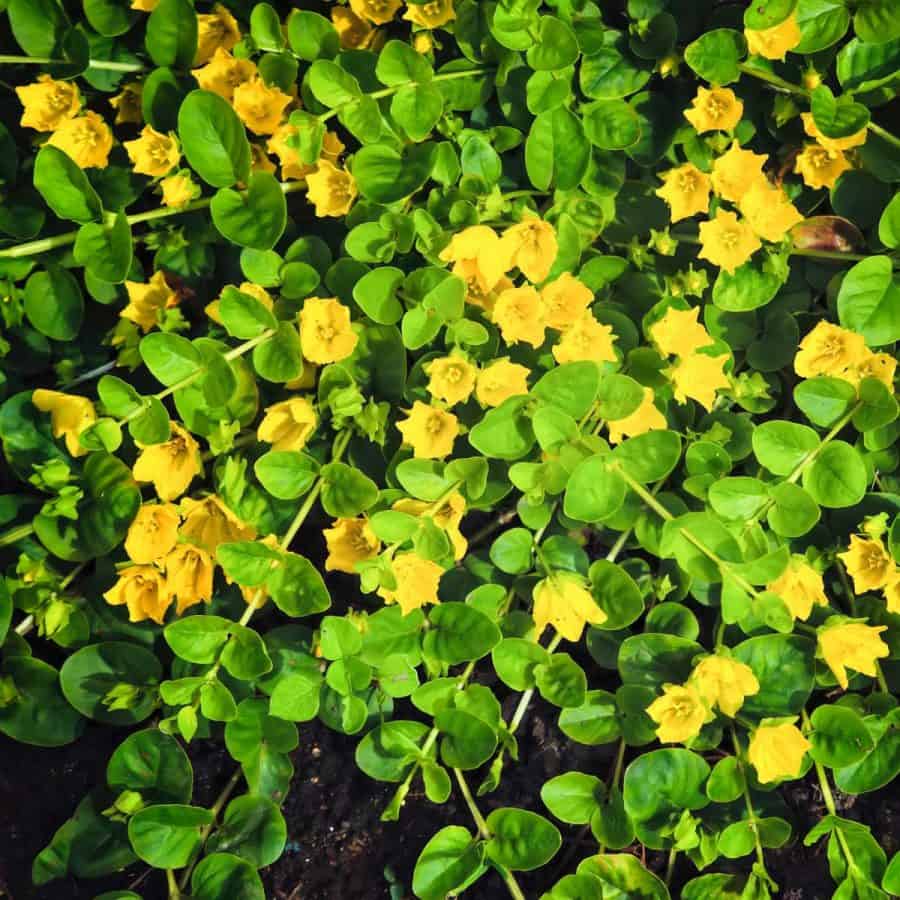
Creeping Jenny is an ivy-like plant that does well as ground cover, but it can also grow in a pot, especially in a hanging pot or a tall pot, producing a vine-like effect.
Its small, heart-shaped leaves are a vibrant green, and its delicate yellow flowers bloom in the spring.
It does well in sun or partial shade. Ensure the containers have good drainage but water regularly, keeping the soil moist, as creeping Jenny does not like to dry out completely.
Though it does well as a houseplant, it is an easy pick for winter pots because it is hardy and can withstand cold temperatures.
Cold hardy to zone 4
Here are some ideas for other great plants for hanging basket planters.
13. Christmas Rose | Helleborus niger
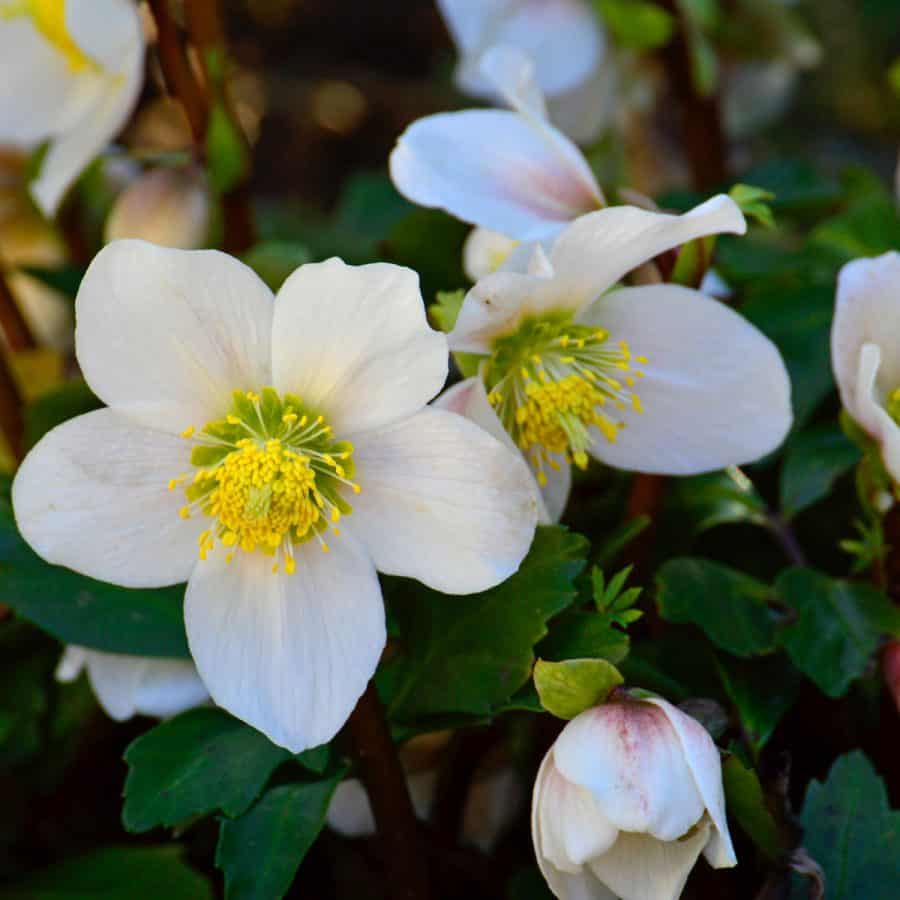
This beautiful evergreen perennial blooms in the winter months and boasts a flower that looks much like a buttercup and is known affectionately as a Christmas rose.
As the weather worsens, the wild white rose feeds off the cold temperatures and produces delicate white flowers with lots of deep green foliage that are a lovely sight in winter’s cold, dreary days.
The Christmas rose is a hardy plant that can withstand temperatures as low as -20 degrees Fahrenheit.
It prefers to grow in full sun or partial shade and does well in various soil types. This plant is drought-tolerant but must be watered regularly during winter.
The Christmas rose is perfect if you want a winter-blooming plant that will impress.
Cold hardy to zone 4
14. Blue Spruce

The blue spruce tree is a visually perfect winter plant for a pot. Its delicate, sage-colored needles are like snowflakes dancing in the wind.
The star-shaped flowers are a deep blue, and the vibrant red berries are against the snow.
It is hardy in zones 2-7, prefers full sun, and is suitable for many climates.
It’s also very low-maintenance, so you can enjoy its beauty without worrying about much care.
- Tips for how to grow a blue spruce tree in a pot:
- Use a pot at least 18 inches in diameter with drainage holes.
- Place your tree in a spot where it will get at least 6 hours of sunlight daily.
- Water your blue spruce tree regularly; the soil should be moist but not soggy.
- Fertilize your tree once a year in the spring with a balanced fertilizer.
Cold hardy to zone 2
15. Snowdrops

Snowdrops, affectionately named after their white petals, look a lot like drops of snow or ice, and their yellow stamens add a touch of sunshine—the delicate flower blooms in the early spring.
Snowdrops are hardy, can withstand cold temperatures, and are easy to care for. They prefer a shady location with well-drained soil.
They do not need a lot of water, but you should water them regularly during dry spells.
Cold hardy to zone 3
16. Coral Bells | Heuchera

With so many varieties of coral bells to choose from, you can easily find just the perfect color plant for your winter pots. Most coral bells are evergreen.
They go dormant in winter but maintain the lovely colored foliage in their leaves.
The shape of the flowers is like tiny bells, often surrounded by a ring of colorful bracts, which bloom in spring or summer.
Coral bells look especially lovely on a hanging planter or a shelf before a window.
Tips for growing coral bells outdoors in planters in cold weather:
- Deadhead coral bells regularly to encourage new blooms.
- Remove spent flowers from the plant to promote new growth.
- Water once a month to prevent them from drying out.
Cold hardy to zone 4
17. Ornamental Cabbages
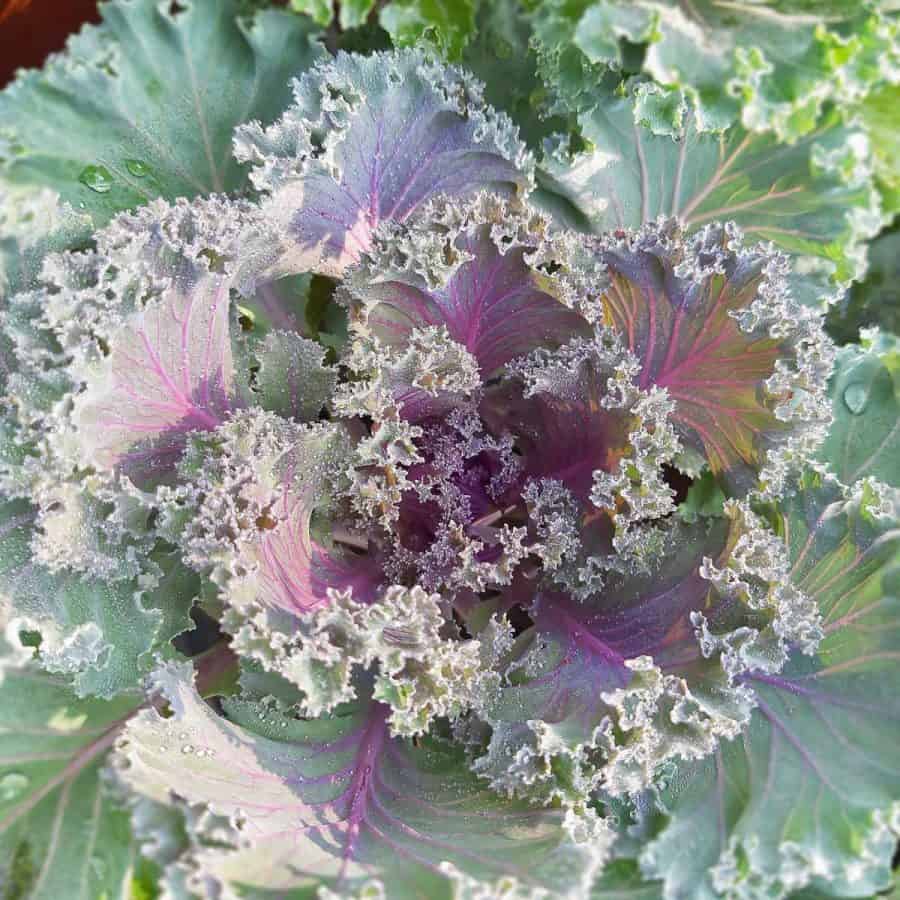
Ornamental cabbage is a beautiful and unique plant with ruffled leaves in various colors, including green, purple, and red.
As the weather gets colder, the colors of the leaves become more intense, making ornamental cabbage a stunning addition to any winter container.
Ornamental cabbage survives to about 5 degrees but may not do well in a cold snap and should be gradually acclimated, so cover them if you have an early frost or freeze.
It is also popular for cut flowers, as its colorful leaves make a striking statement in a vase.
Another great idea if you have a larger pot is to place your ornamental cabbage in the center and put pansies in the surrounding soil.
Cold hardy to zone 2
18. Lavender

Lavender is a popular ornamental plant that is both beautiful and fragrant. It has gray-green leaves and fragrant purple flowers.
The flowers are typically in the shape of a spike, and they bloom in the summer.
Though it is a drought-tolerant plant that can withstand heat, humidity, and water regularly during summer, since it is relatively easy to care for, it is a good choice for beginners.
You can use lavender in aromatherapy, and it is also a popular ingredient in culinary dishes.
Cold hardy to zone 5
19. Hens and Chicks | Sempervivum
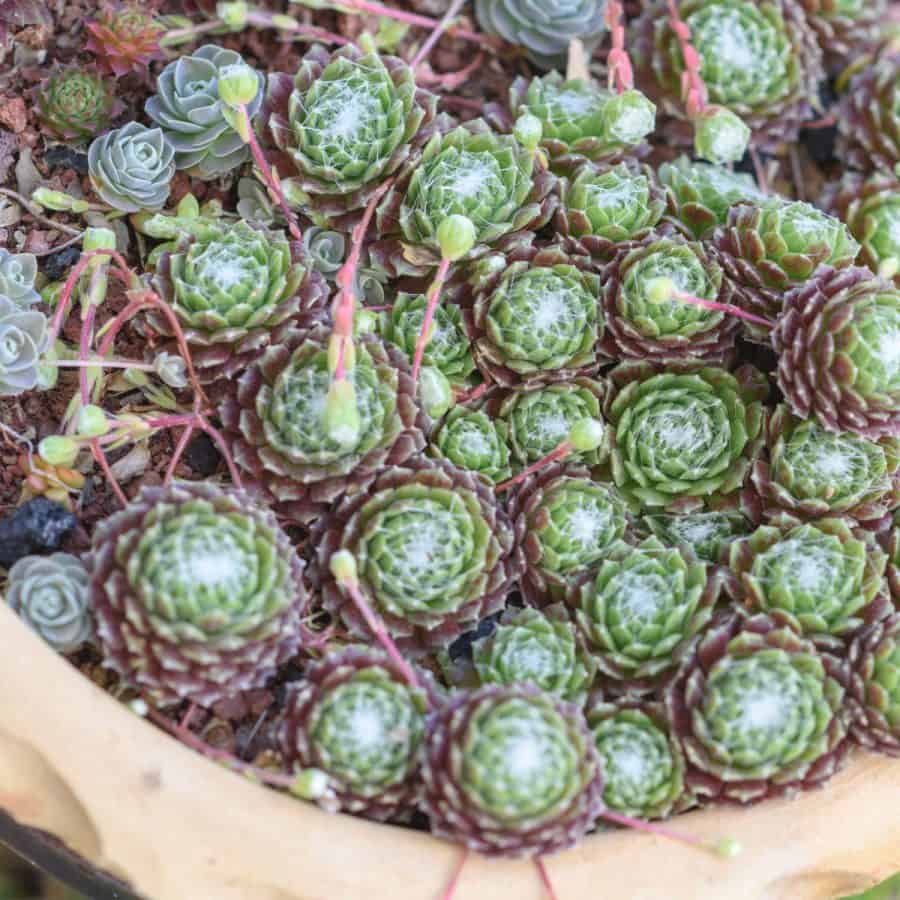
Hens and chicks are characterized by their rosettes of fleshy leaves, often green, gray, or purple.
The center of the rosette has a single flower on top, which can be white, pink, or purple.
These succulents are easy to care for and are a great choice for beginners, as you can water them infrequently.
When planting them in pots, make sure the pot has good drainage.
Sempervivum, also known as “hens and chicks,” is a hardy succulent that is perfect for adding a touch of color to your porch in winter.
They are easy to care for and are good for beginners because they are drought-tolerant and can withstand a wide range of temperatures.
Here are some tips for growing sempervivums in a planter outside in winter:
- Choose a sunny spot for your sempervivums. They need at least six hours of sunlight per day to thrive.
- Plant your sempervivums in well-draining soil. They do not like sitting in wet soil, so ensure the pot has drainage holes.
- Water your sempervivums only when the soil is dry. They are drought-tolerant and can withstand a long period without water.
Cold hardy to zone 4
20. Woodland Stonecrop | Sedum ternatum

Sedum ternatum, also known as woodland stonecrop, is a cold-hardy succulent that is perfect for adding a splash of color to your winter pots. It is another low-maintenance plant.
Woodland Stonecrop grows in a creeping habit, forming a mat of small, fleshy leaves.
But what really sets Sedum ternatum apart is its unique shape.
The leaves are green, with a slightly reddish tint, and arranged in a rosette, and each rosette has a cluster of white flowers, giving this succulent plant a unique appearance.
Woodland Stonecrop will add a touch of beauty to your outdoor space if you are looking for a low-maintenance, colorful plant.
Cold hardy to zone 4
21. Little Bluestem | Schizachyrium scoparium

This splendid grass is a clumping one, making it suitable for pots. It is ideal for filling in larger areas on a porch.
This robust, fringed grass will be silvery blue in the spring and transform into a burnt orange-to-yellow in the fall.
Little bluestem grass is a graceful, airy grass perfect for adding a touch of natural beauty to your pots.
It is a clump-forming grass that grows to a height of about 2-3 feet, making it ideal for filling in larger spaces on your porch or garden areas.
The leaves are long and slender and have a silvery-blue color that transforms to a copper-like color in fall.
The flowers are small and inconspicuous, but they add a touch of beauty to the plant.
Little bluestem is a low-maintenance plant that requires little water.
Cold hardy to zone 3
Other related articles to help you with selecting plants:
- 35 Best Climbing Plants For A Trellis
- 22 Ground Cover Plants For Shade
- 25 Best Plants For Hanging Planters
Tips for Preparing Winter Plants for Pots
- Select a frost proof container. A pot with drainage holes in the bottom will help with this.
Clay and terracotta pots are prone to cracking in frost, so they should be avoided as outdoor pots during the winter.
Some good options for winter pots include fiberglass, wood, treated terra cotta, and plastic pots, as they’ll offer extra protection for your plant.
You can even try out some window boxes.
Concrete and cement are very reliable in winter months. Here are three unique DIY concrete planters you make– a cement balloon planter, vibrantly dyed concrete planter, and this modern white concrete planter. - Choose a good potting soil: Use a mix that is specifically made for containers as it provides essential drainage.
- Don’t feed plants in the fall: Stop feeding your plants about 6-8 weeks before your first frost date.
This prevents new growth, which is often tender and won’t survive the winter. You can start feeding them again next spring.
- Water– Water plants as needed until the soil in the container is frozen. Do not continue watering frozen pots because the plants won’t be able to absorb water.
Can flower pots stay outside in winter?
As a general rule of thumb, yes. Some hardy perennial plants and shrubs are hardy plants for pots outdoors and in the winter weather.
However, plants or shrubs for containers are different from plants in the ground. They are more reliant on you for their care.
If your plant is hardy to two zones colder than the area where you live, it is likely a good candidate for surviving the winter in a container.
Are there any flowers that bloom in the winter?
You absolutely don’t have to wait for spring to enjoy flowering plants. There are many hardy flowering plants such as:
- Cyclamen
- Snowdrops
- Winter pansies
- Hellebores
- Hardy clematis
What evergreens grow well in pots?
Plants with evergreen foliage make great plants for winter containers.
- Japanese Yew
- Potted Blue Spruce
- Boxwood Hedge
- Cypress Topiary
And when spring comes, it will be time to bring those less hardy plants back outside.
Don’t forget to Pin it for later!

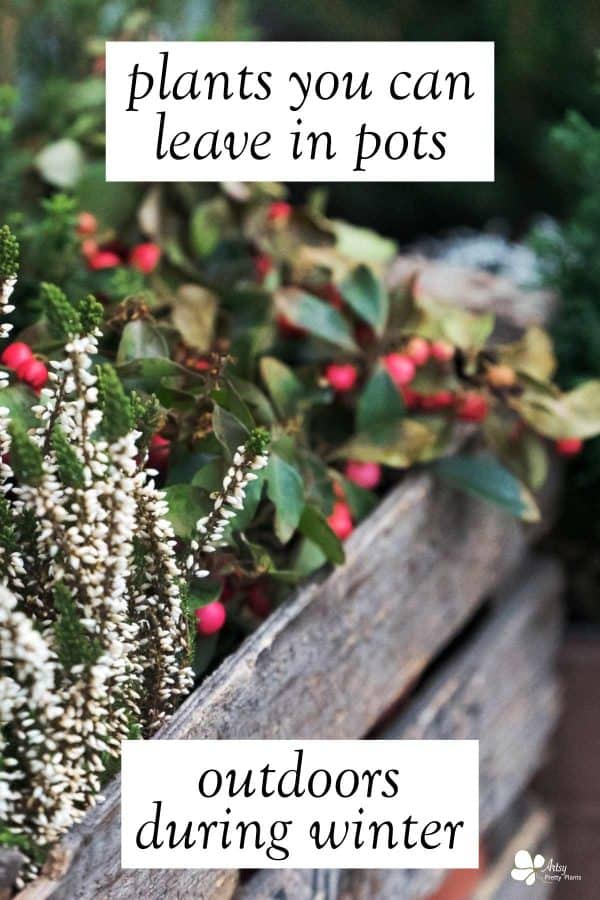

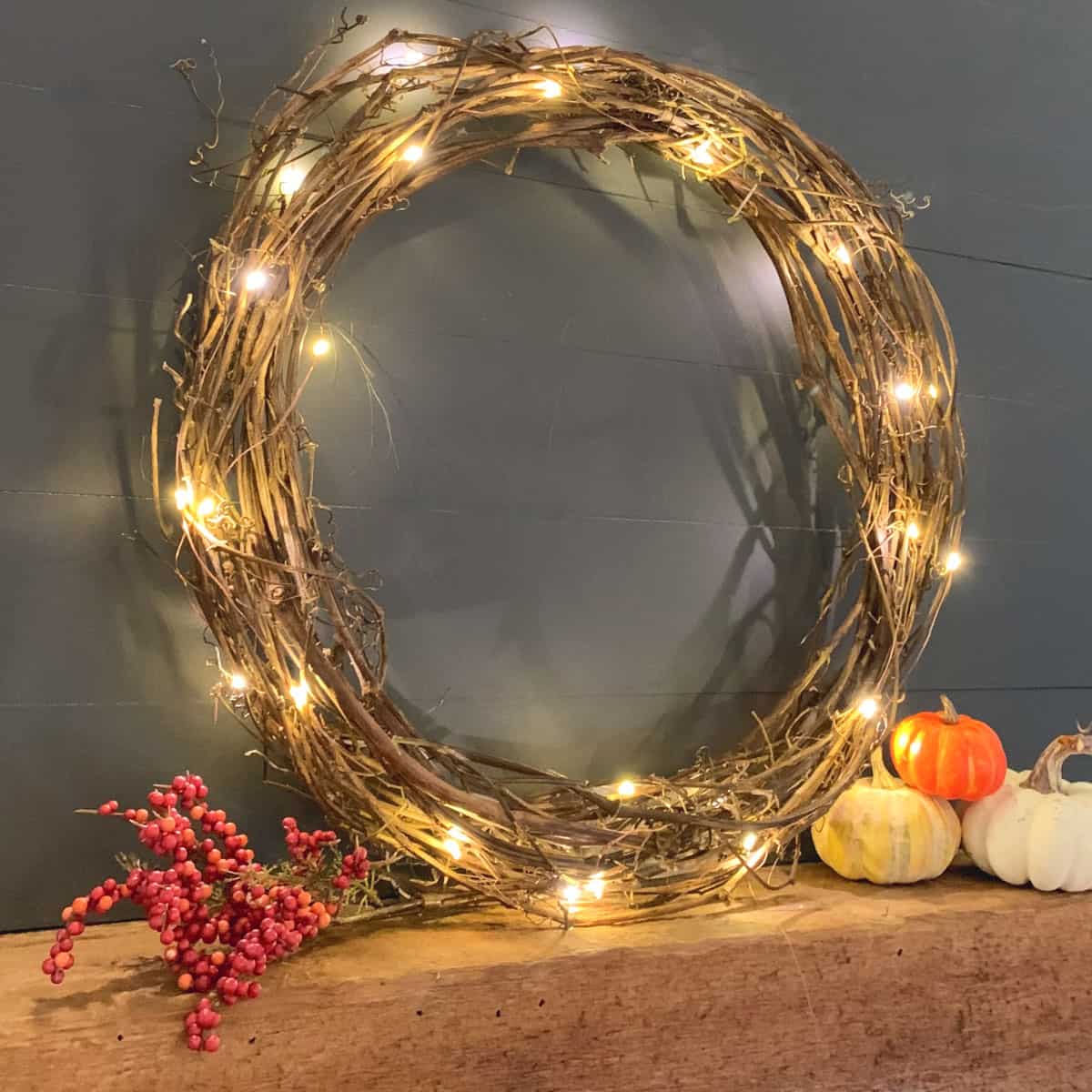
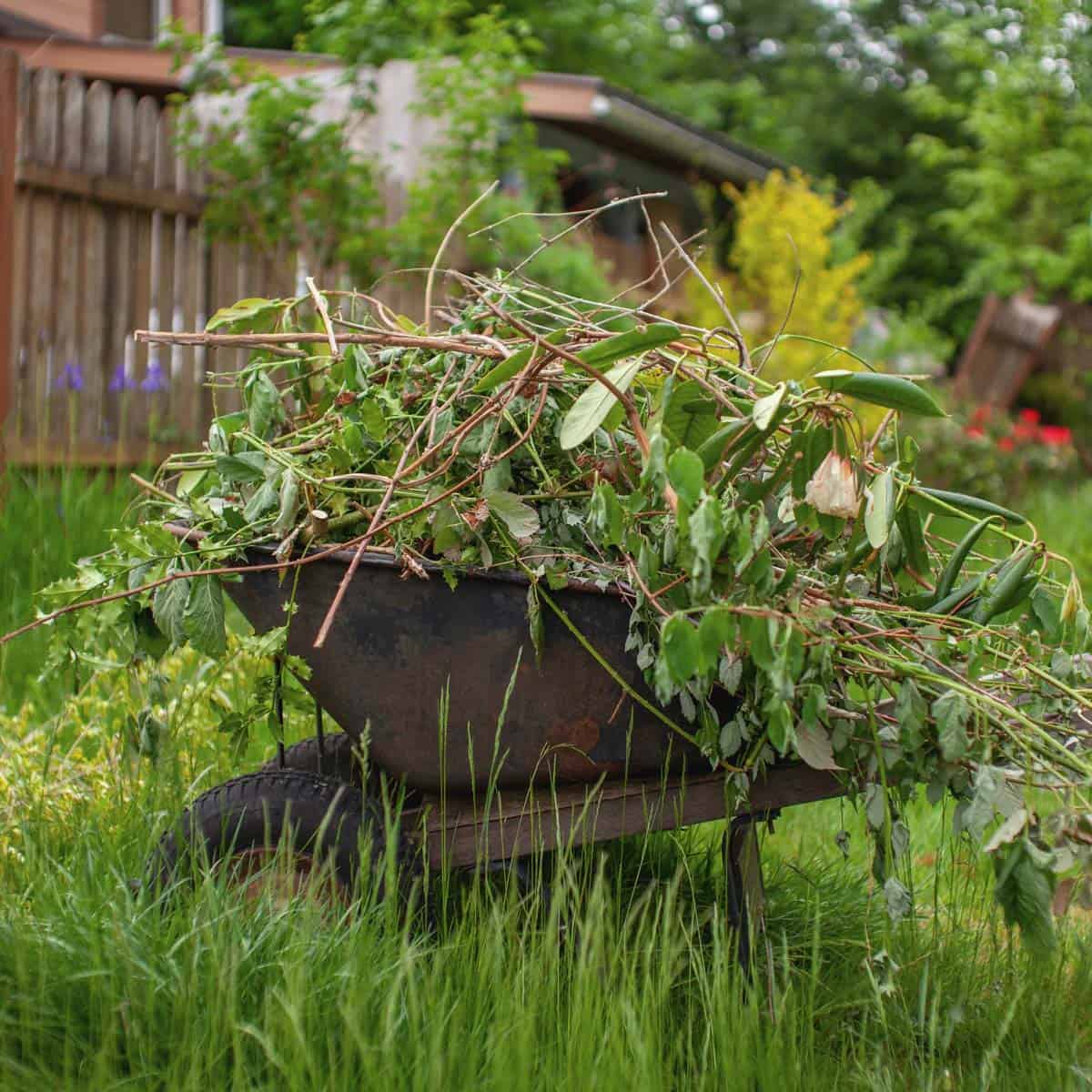
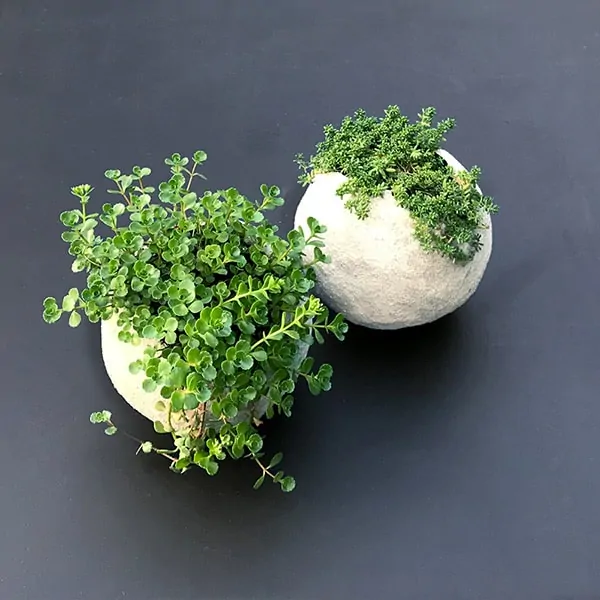



4 – Pansies – or the tender African Violet (Saintpaulia)?
Hi Lyn,
African violets are beautiful, but they are indoor plants. The article is for plants that can survive the winter outside.
Sure, Ellen but your picture 4 is of African Violets (Saintpaulia), as opposed to the regular hardy Pansies (Viola) – which do not have hairy leaves afaik.
Ooooh, you are so right Lyn! Thank you. I will change that out asap.
While you’re changing pictures… appears that azaleas are shown as camellias
Hi Tom,
Thank you! Fixed both photos.